The National Museum
 An overview of the Central Market (Phsar Thum They) in Phnom Penh,
Cambodia. Beneath a lemon-yellow art deco dome, the Central Market
offers miles of no-strings-attached window-shopping. But if you can't
stand the thought of leaving empty-handed, pick up flip-flops, jewelry,
delicacies like juicy mangosteen fruit or fried insects, or khama
An overview of the Central Market (Phsar Thum They) in Phnom Penh,
Cambodia. Beneath a lemon-yellow art deco dome, the Central Market
offers miles of no-strings-attached window-shopping. But if you can't
stand the thought of leaving empty-handed, pick up flip-flops, jewelry,
delicacies like juicy mangosteen fruit or fried insects, or khama
scarves in bright, gingham-like patterns. On Friday, Saturday and Sunday nights, the nearby Night Market (Phsar Reatrey) becomes to go-to spot for displaying handicrafts
 An overview of the Central Market (Phsar Thum They) in Phnom Penh,
Cambodia. Beneath a lemon-yellow art deco dome, the Central Market
offers miles of no-strings-attached window-shopping. But if you can't
stand the thought of leaving empty-handed, pick up flip-flops, jewelry,
delicacies like juicy mangosteen fruit or fried insects, or khama
An overview of the Central Market (Phsar Thum They) in Phnom Penh,
Cambodia. Beneath a lemon-yellow art deco dome, the Central Market
offers miles of no-strings-attached window-shopping. But if you can't
stand the thought of leaving empty-handed, pick up flip-flops, jewelry,
delicacies like juicy mangosteen fruit or fried insects, or khamascarves in bright, gingham-like patterns. On Friday, Saturday and Sunday nights, the nearby Night Market (Phsar Reatrey) becomes to go-to spot for displaying handicrafts

Cambodian
jewelry vendors wait for customers in the Central Market (Phsar Thum
They) in Phnom Penh, Cambodia. Beneath a lemon-yellow art deco dome, the
Central Market offers miles of no-strings-attached window-shopping. But
if you can't stand the thought of leaving empty-handed, pick up
flip-flops, jewelry, delicacies like juicy mangosteen fruit or fried
insects, or khama scarves in bright, gingham-like patterns. (AP
Photo/Heng Sinith)
More pictures, click here.
PHNOM PENH, Cambodia -- The Cambodian capital of Phnom Penh is
rapidly modernizing. A gargantuan hotel and casino called NagaWorld has
recently been completed, and dime-a-dozen skyscrapers are popping up all
over the city. But some of the city's most interesting places are
connected to its past. A number of museums honor victims of the Khmer
Rouge genocide, while French Colonial architecture harkens back to a
bygone era when the city was known as the Pearl of Asia. Decades later,
the nickname still seems apt, suggesting pure beauty inside a tough
shell.
Phnom Penh's developing tourism sector also means that nearly every
attraction has an entry fee, even if just a dollar or two. But in
keeping with history, some sites cost nothing at all.
CHROY CHANGVAR BRIDGE
To observe a country at a crossroads, what better place than a serene
suspension bridge? Constructed in 1966 and rebuilt in 1995 after its
destruction at the hands of the Khmer Rouge, the Japanese-Cambodian
Friendship Bridge provides a panoramic look at life along both sides of
the Tonle Sap River. Make treks across the narrow footpath if you dare,
though be prepared to dodge oncoming traffic, or simply pause to admire a
view that stretches for miles.
SISOWATH QUAY
For a waterfront adventure a bit closer to the ground, wander past
the charming cafe, boisterous pubs and many shops along this popular
riverfront stretch. With the Royal Palace in the background, duck into
the galleries along Street 178, known to locals as Art Street, for a
glimpse at local handicrafts and silk samples. Overlooking the
Chaktomuk, the convergence point of the city's three rivers - the Tonle
Sap, the Mekong, and the Basaac - this paved walkway bustles at any time
of day but comes alive at night, when tourists and locals alike pour
into mainstays like the Foreign Correspondents Club bar.
PHSAR THOM THMEI
Beneath a lemon-yellow art deco dome, the Central Market offers miles
of no-strings-attached window-shopping. But if you can't stand the
thought of leaving empty-handed, pick up flip-flops, jewelry, delicacies
like juicy mangosteen fruit or fried insects, or khama scarves in
bright, gingham-like patterns. On Friday, Saturday and Sunday nights,
the nearby Night Market (Phsar Reatrey) becomes to go-to spot for
displaying handicrafts produced by local artisans.
TEMPLE TIME
With a pricetag of a dollar, admission to the centuries-old hilltop
temple of Wat Phnom isn't quite free. Nor are the elephant rides that
are offered on site. But a free and carefree stroll along the bucolic
grounds is a reward in and of itself. Sculpted into the hillside leading
to the temple's entrance is a functioning topiary clock, whereas the
gigantic sculpture of a Naga, or sea snake, provides yet another photo
op.
MONUMENTAL TRIBUTES
Though statues crop up in unusual places around town, two of the most
iconic structures sit just steps away from the Royal Palace. Inspired
by lotus blossoms and Buddhist stupas, or burial mounds, the bulbous
spire of the Independence Monument is a striking shade of terra cotta by
day and brightly illuminated by night. Glowing or not, it was
constructed in 1958 to commemorate independence from the French that had
been achieved five years prior. The concrete soldiers at the base of
the Cambodian Vietnamese Friendship Monument, on the other hand, pay
tribute to an alliance formed between the two countries in the aftermath
of the 1979 fall of the Khmer Rouge. But its political message makes it
a lightning rod for protest - in 2007, unidentified suspects detonated a
bomb near the statue.

28 February 2013
The Huffington Post